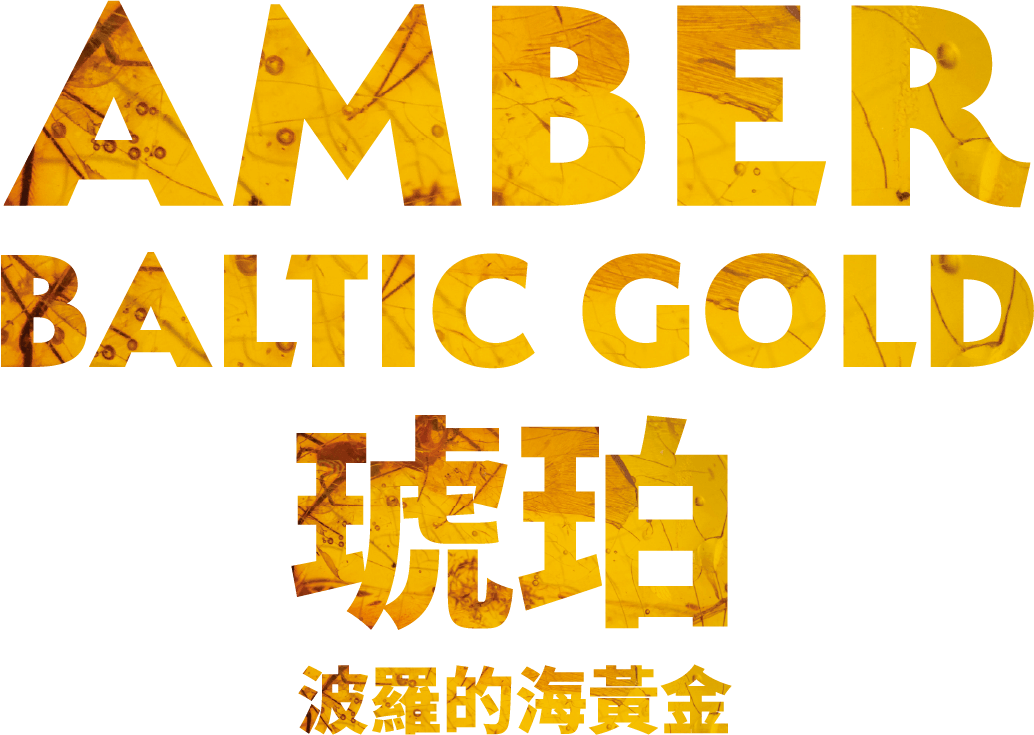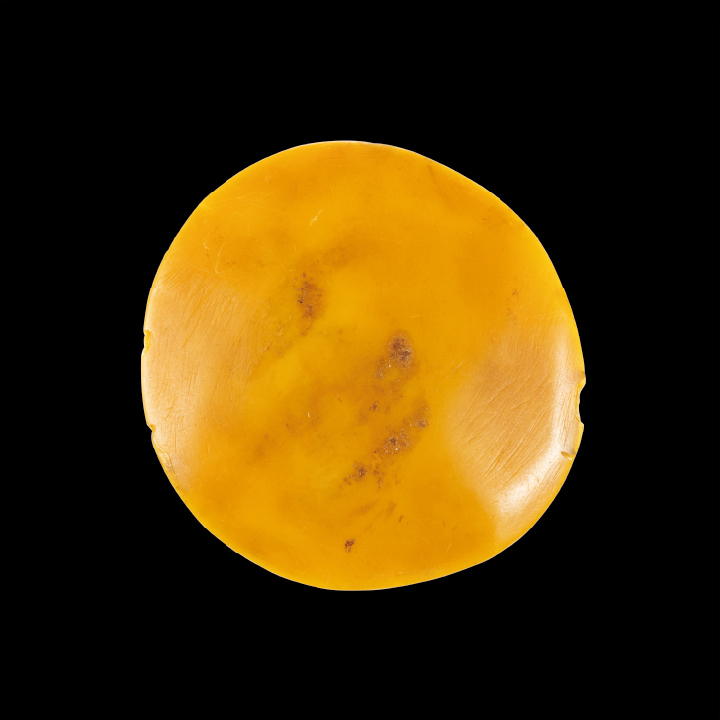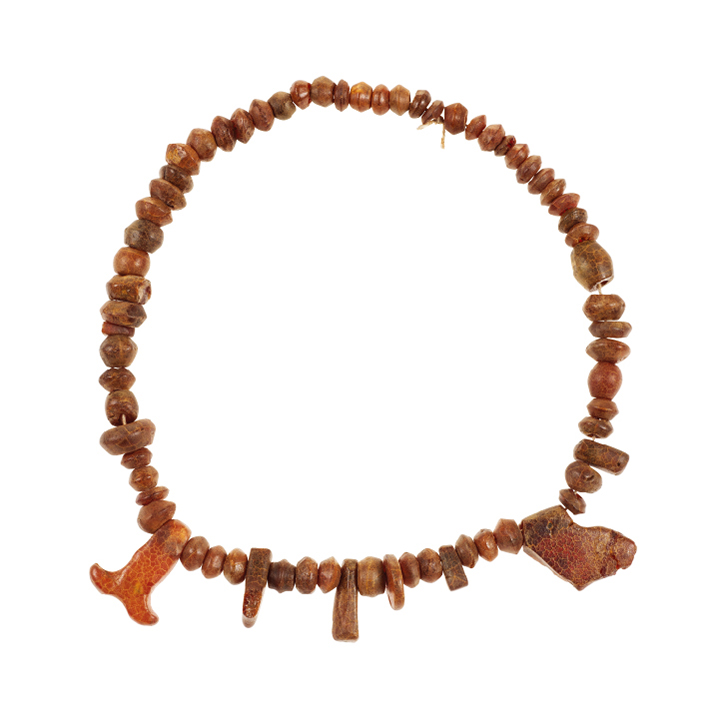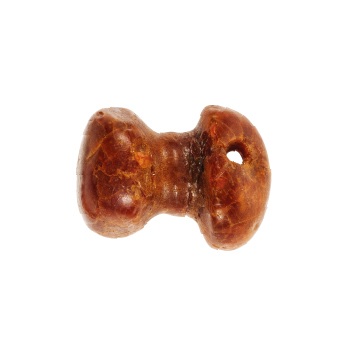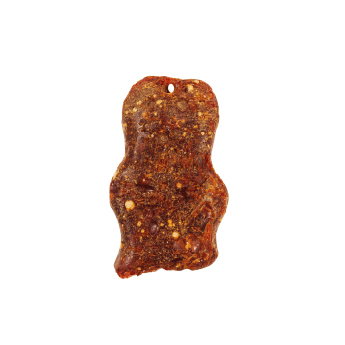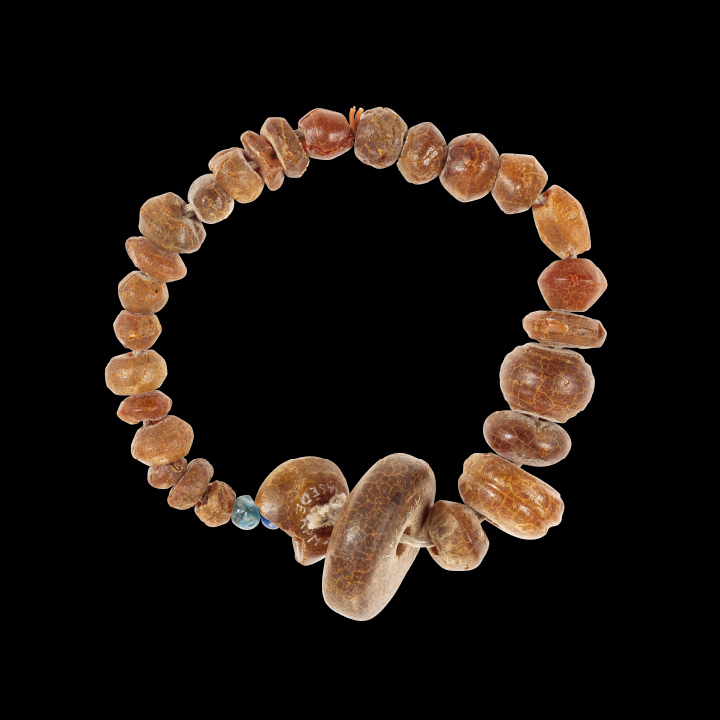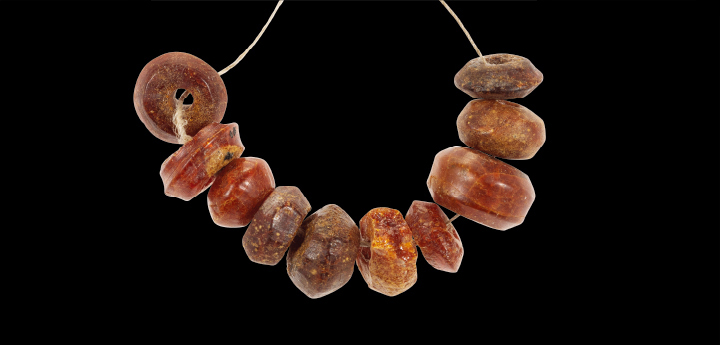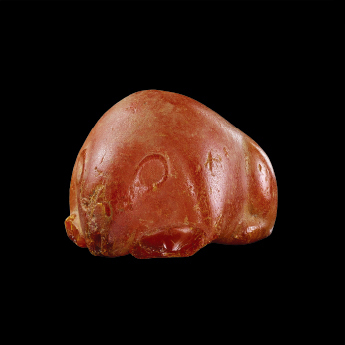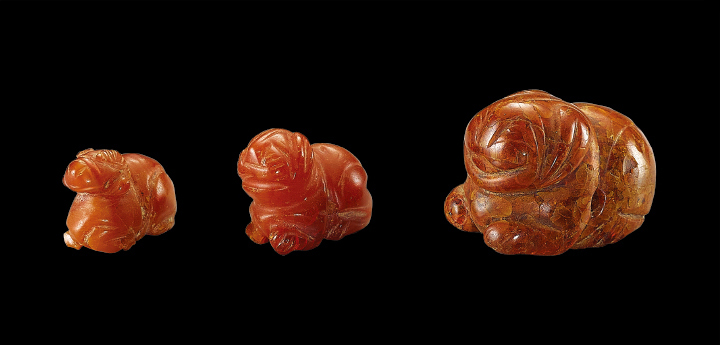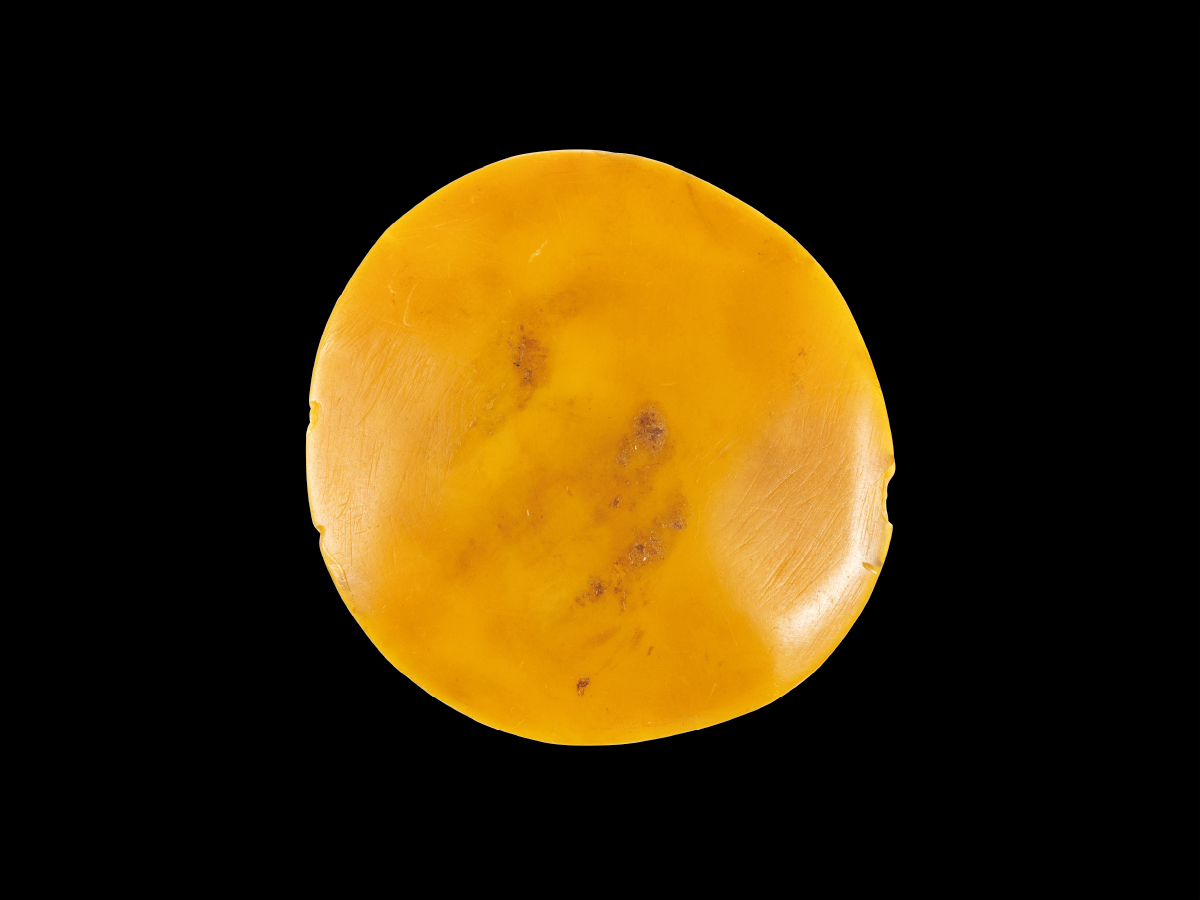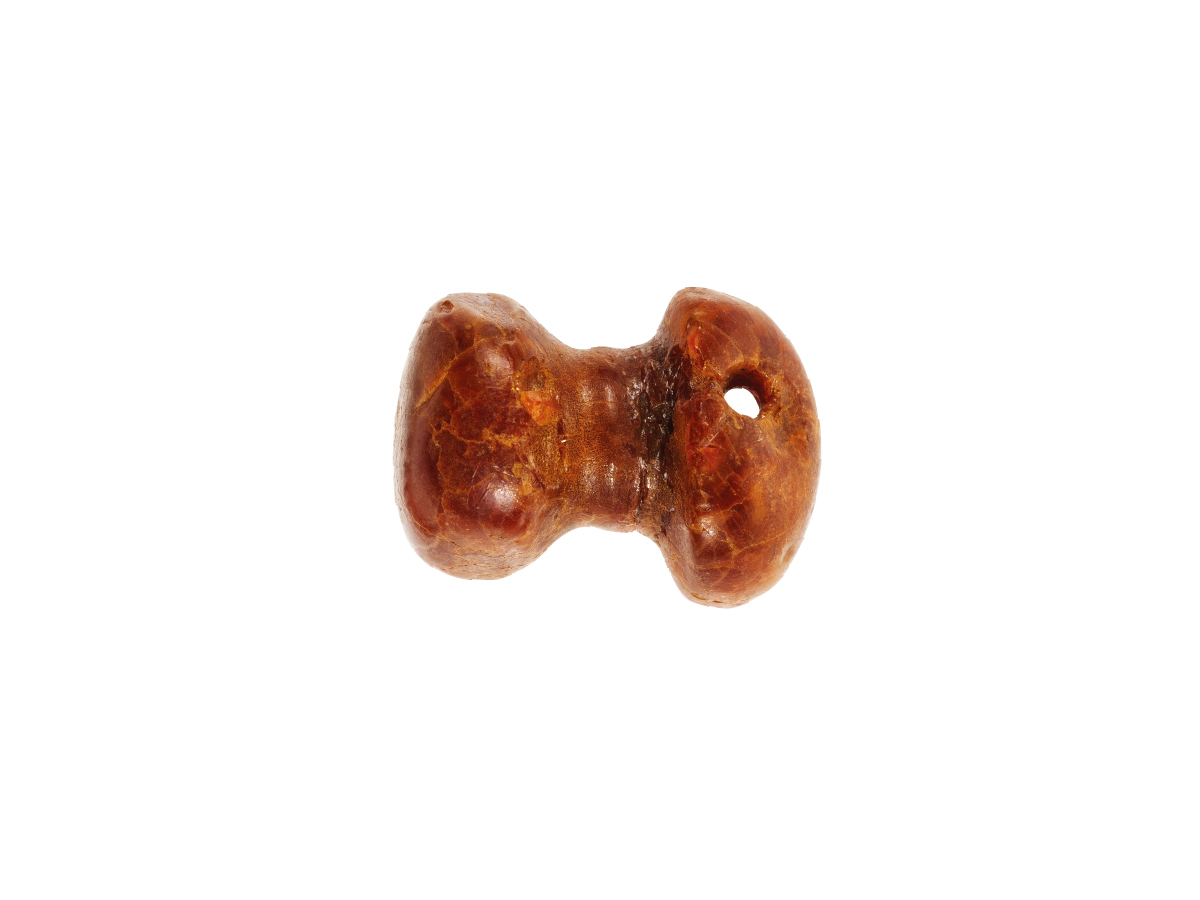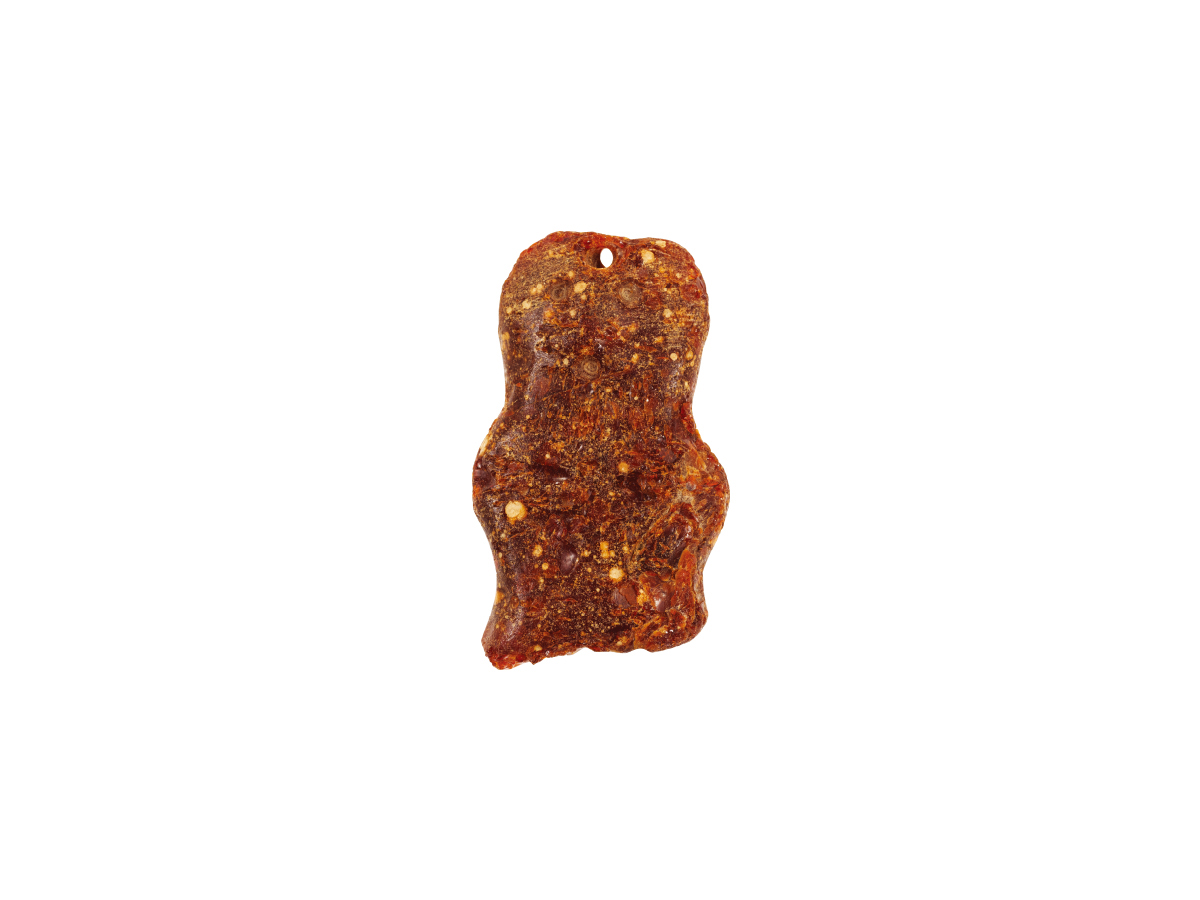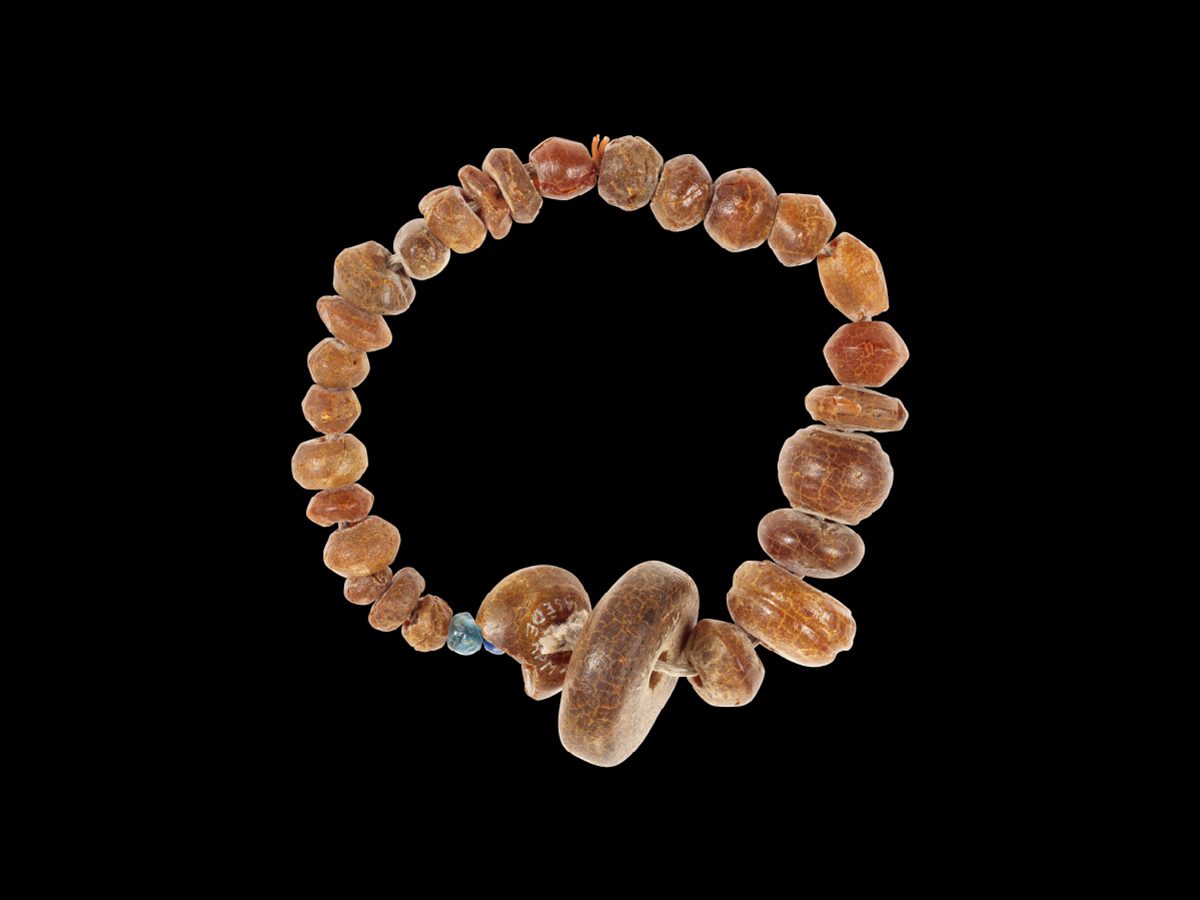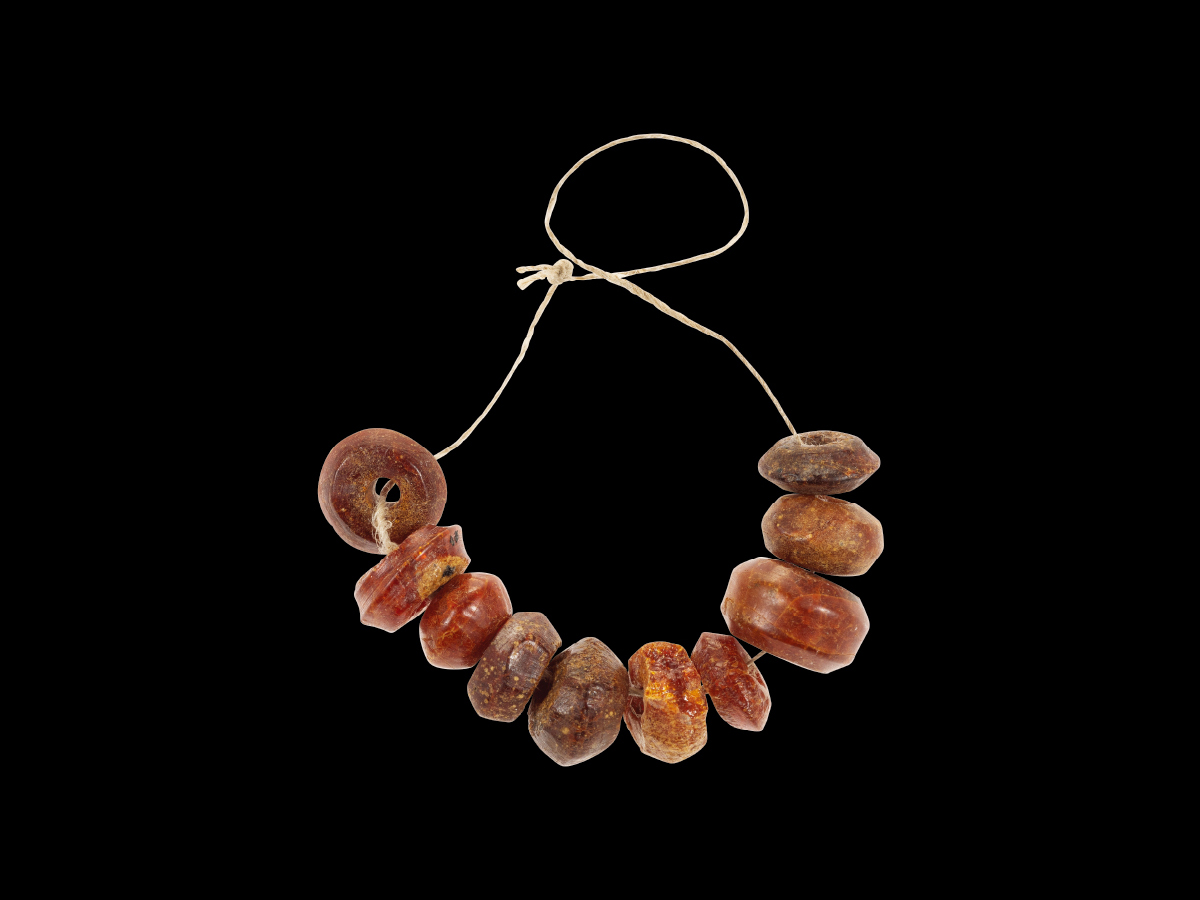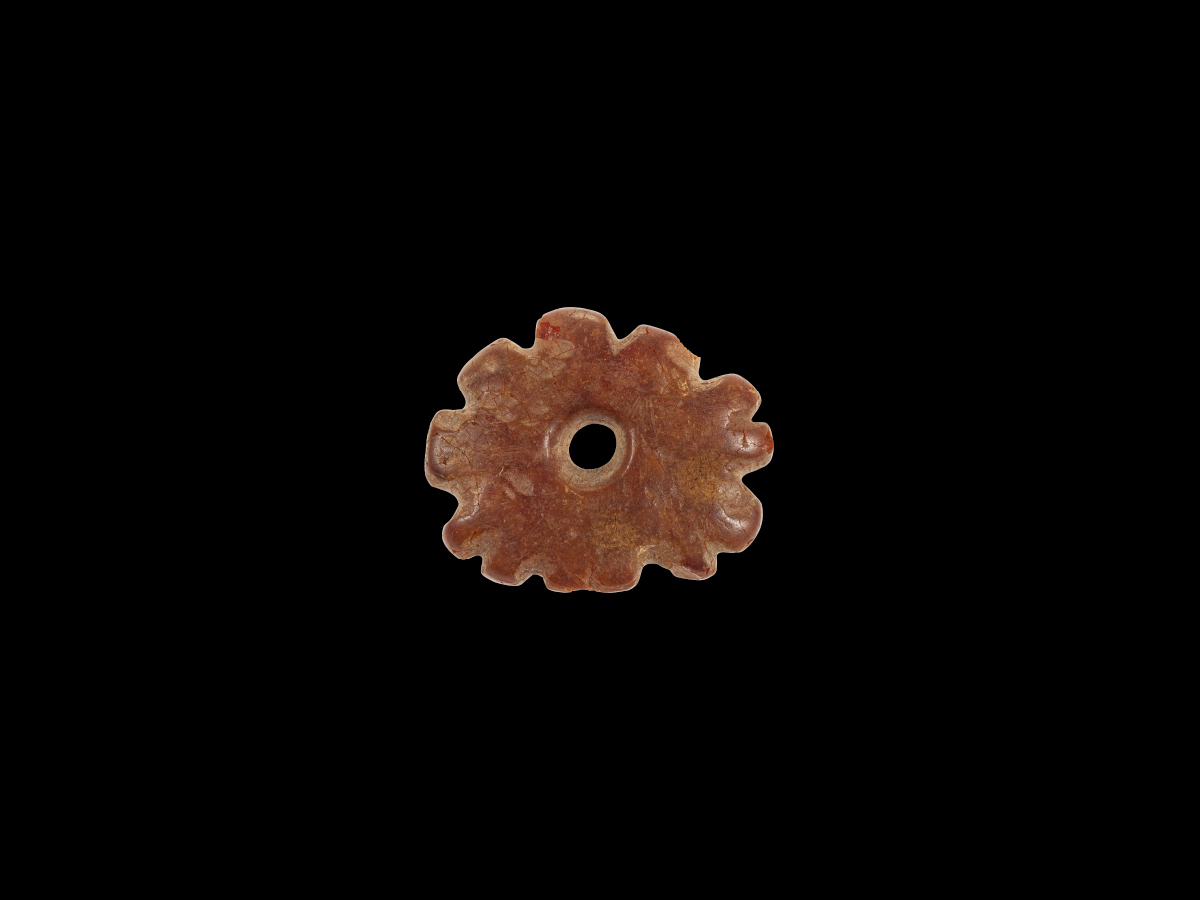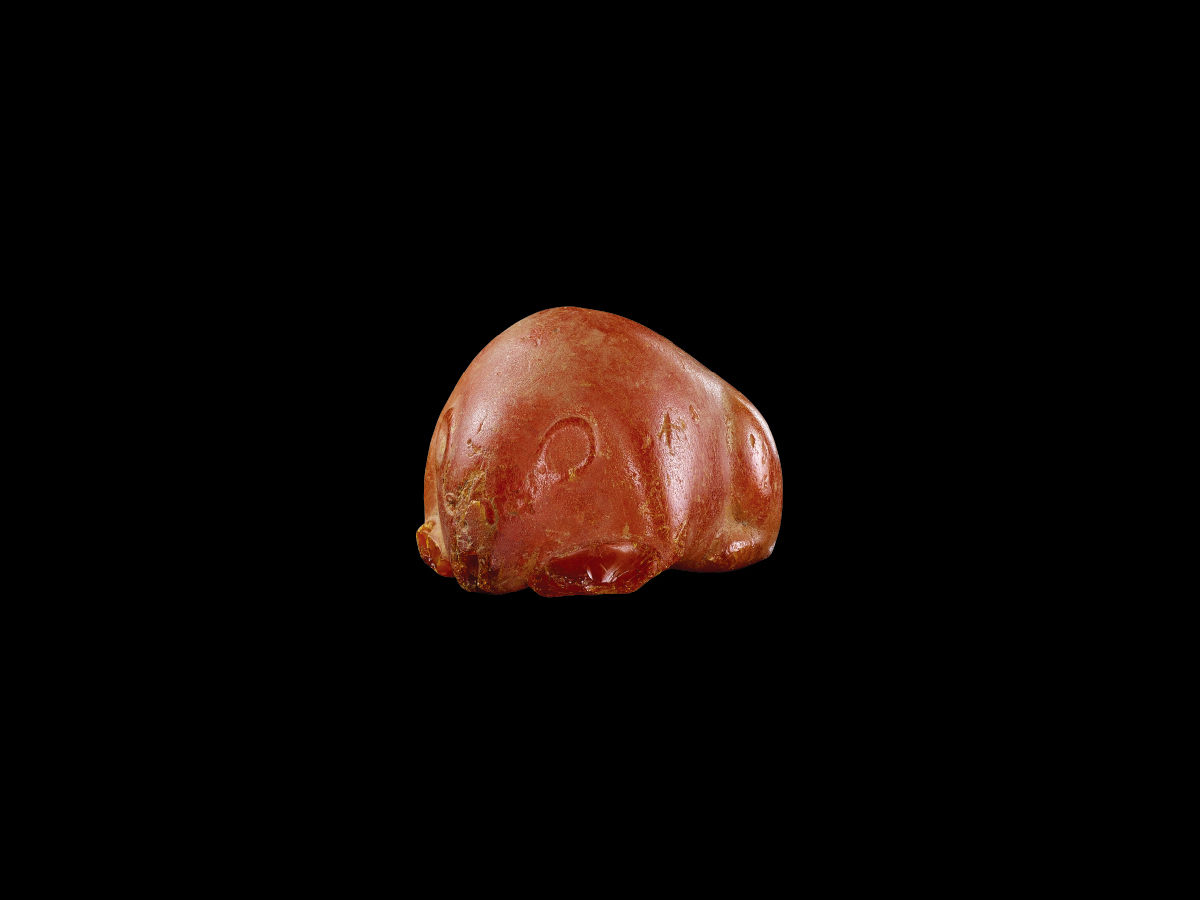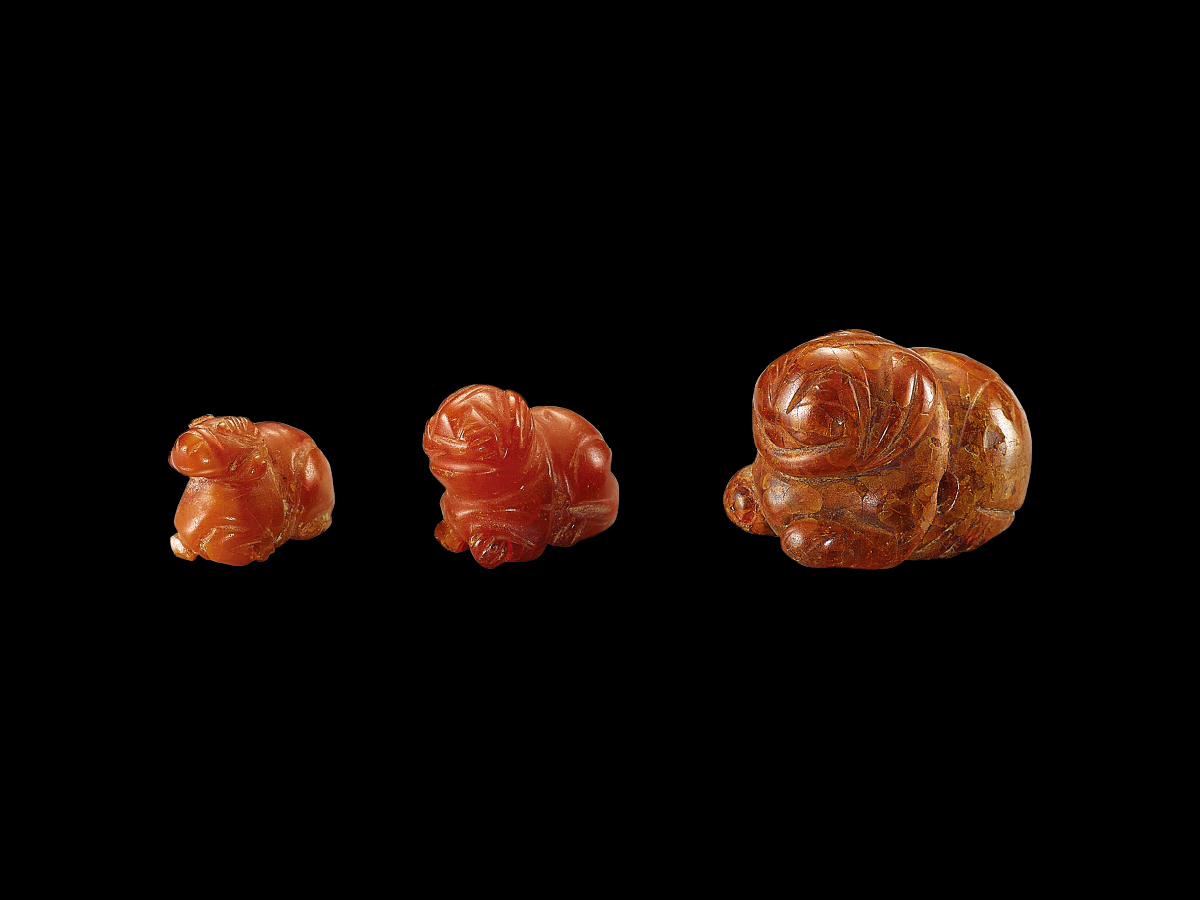Ancient Amber
In Denmark and Germany amber was in use as early as the Upper Palaeolithic period, or about 40,000 to 10,000 BCE. In Latvia, processed amber survives from the Middle Neolithic Period (around 4,100 BCE). Baltic peoples started trading amber quite early and it appears in China around 1,000 BCE, valued both as a fragrance and even more as a gemstone. While some amber pieces survive from the Han dynasty (202 BCE-220 CE), these were found in tombs along the Maritime Silk Road, reflecting the localized influence of trade which brought in foreign, exotic items, rather than a genuine appreciation of amber itself. Only under the influence of nomadic kingdoms in North China, especially that of the Liao dynasty (916-1125) established by the Qidan, does amber emerge as a highly prized artistic material.
Amber Bead or Button
3,400 - 2,300 BCEDiam. 3.6 cm
National History Museum of Latvia
Amber Necklace
3rd century CEBeads Diam. 0.5-1.3 cm x L: 0.3-1 cm
Largest pendant: L. 2.3 cm x W. 1.9 cm
National History Museum of Latvia
Double Button
800 - 500 BCEAmber
H. 1.5 cm x L. 2.0 cm
National History Museum of Latvia
Anthropomorphic Pendant
2,300 - 1,800 BCEAmber
H. 5.7 cm x L. 3.4 cm
National History Museum of Latvia
Amber and Glass Necklace
4th century CEDiam. 0.6-0.3 cm
National History Museum of Latvia
Amber Beads
3rd - 4th century CEDiam. 0.8-3.6 cm
National History Museum of Latvia
Amber Pendant
5th - 6th century CEH. 4.2 cm x L. 3.5 cm
National History Museum of Latvia
Bear Pendant
Liao Dynasty (916-1125)Amber
H. 2.5 cm x L. 4.2 cm x W. 2.5 cm
Mengdiexuan Collection
Set of Three Lions
Eastern Han Dynasty (25-220 CE)Amber
The Largest: H. 2 cm x W. 3 cm
Mengdiexuan Collection

